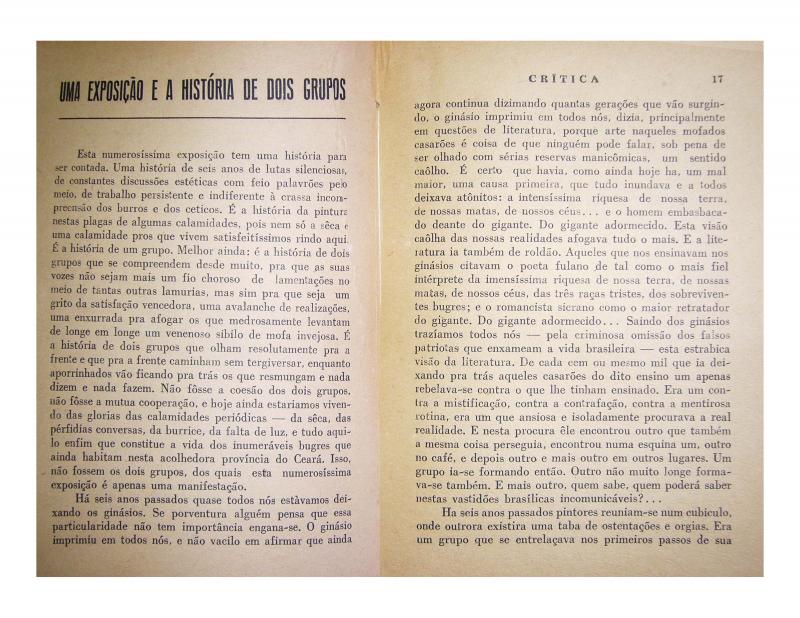In 1945 a group of artists from the state of Ceará (Antonio Bandeira, Inimá [de Paula], Raimundo Feitosa, Jean-Pierre Chabloz, Aldemir Martins, and Raimundo Cela) moved to what was then the national capital city of Rio de Janeiro. In Fortaleza (their state capital) they were all members of the SCAP (Sociedade Cearense de Artes Plásticas), a union founded in 1944 to produce and promote modern art in this northeastern state. Chico da Silva, Bandeira, Inimá, Feitosa, and Chabloz took part in the “exposição cearense” that the critic Mário Baratta discusses in this article. The exhibition, which presumed to showcase the art that was being produced in Ceará at that time on the national stage, was introduced by an essay written by the critic Ruben Navarra.
[Regarding the SCAP and written by Baratta, see in the ICAA digital archive “Aldemir Martins e a pintura” (doc. no. 1110782); “De como deve ser visto o binômio Clã-SCAP” (doc. no. 1111385); “Pincéis e violinos” (doc. no. 1110784); and the letter from Mario de Andrade on the subject (doc. no. 1110783). See also the articles by José Roberto Teixeira Leite “Raimundo Cela: um pioneiro esquecido” (doc. no. 1110790); and by Ronaldo Brito “Trágico moderno” (doc. no. 1110423). See also by Vera Lúcia Alburquerque de Moraes “Abrindo a revista” (doc. no. 1110770); by Aluízio Medeiros “Uma exposição e a história de dois grupos” (doc. no. 1110776); and by Barboza Leite (untitled) [“A arte preside o destino da humanidade (…)”] (doc. no. 1110786)].









